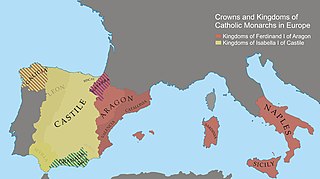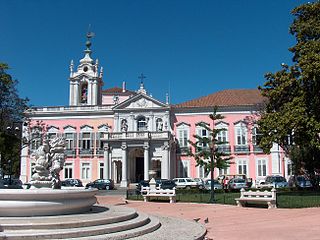This article is being considered for deletion in accordance with Wikipedia's deletion policy. Please share your thoughts on the matter at this article's deletion discussion page. |
This is a list of Portuguese monarchs by longevity since the formation of the Kingdom of Portugal in the 12th century.



| Rank | Monarch | Date of Birth | Date of Death | Longevity (years/days) |
|---|---|---|---|---|
| 1 | Maria I | 17 December 1734 | 20 March 1816 | 81 years, 94 days |
| 2 | Afonso I Henriques | 25 July 1109 | 6 December 1185 | 76 years, 134 days |
| 3 | John I | 11 April 1357 | 14 August 1433 | 76 years, 125 days |
| 4 | Philip I (II of Spain) | 21 December 1527 | 13 September 1598 | 70 years, 266 days |
| 5 | Afonso III | 5 May 1210 | 16 February 1279 | 68 years, 287 days |
| 6 | Cardinal Henry | 31 January 1512 | 31 January 1580 | 68 years, 0 days |
| 7 | Afonso IV | 8 February 1291 | 28 May 1357 | 66 years, 109 days |
| 8 | Miguel | 26 October 1802 | 14 November 1866 | 64 years, 19 days |
| 10 | Denis | 9 October 1261 | 7 January 1325 | 63 years, 90 days |
| 11 | Joseph I | 6 June 1714 | 24 February 1777 | 62 years, 263 days |
| 12 | John V | 22 October 1689 | 31 July 1750 | 60 years, 282 days |
| 13 | Philip III (IV of Spain) | 8 April 1605 | 17 September 1665 | 60 years, 162 days |
| 14 | John VI | 13 May 1767 | 26 March 1826 | 58 years, 317 days |
| 15 | Peter II | 26 April 1648 | 9 December 1706 | 58 years, 227 days |
| 16 | Sancho I | 11 November 1154 | 26 March 1211 | 56 years, 135 days |
| 17 | John III | 7 June 1502 | 11 June 1557 | 55 years, 4 days |
| 18 | John IV | 19 March 1604 | 6 November 1656 | 52 years, 232 days |
| 19 | Manuel I | 31 May 1469 | 13 December 1521 | 52 years, 196 days |
| 20 | Luís I | 31 October 1838 | 19 October 1889 | 50 years, 353 days |
| 21 | Afonso V | 15 January 1432 | 28 August 1481 | 49 years, 225 days |
| 22 | Edward | 31 October 1391 | 13 September 1438 | 46 years, 317 days |
| 23 | Peter I | 8 April 1320 | 18 January 1367 | 46 years, 285 days |
| 24 | Carlos I | 28 September 1863 | 1 February 1908 | 44 years, 126 days |
| 25 | Manuel II | 15 November 1889 | 2 July 1932 | 42 years, 230 days |
| 26 | Philip II (III of Spain) | 14 April 1578 | 31 March 1621 | 42 years, 351 days |
| 27 | John II | 3 March 1455 | 25 October 1495 | 40 years, 236 days |
| 28 | Afonso VI | 21 August 1643 | 12 September 1683 | 40 years, 22 days |
| 29 | Sancho II | 8 September 1209 | 4 January 1248 | 38 years, 118 days |
| 30 | Ferdinand I | 31 October 1345 | 22 October 1383 | 37 years, 356 days |
| 31 | Afonso II | 23 April 1185 | 25 March 1223 | 37 years, 336 days |
| 32 | Pedro IV (I of Brazil) | 12 October 1798 | 24 September 1834 | 35 years, 347 days |
| 33 | Maria II | 4 April 1819 | 15 November 1853 | 34 years, 225 days |
| 34 | Sebastian | 20 January 1554 | 4 August 1578 | 24 years, 196 days |
| 35 | Pedro V | 16 September 1837 | 11 November 1861 | 24 years, 56 days |





